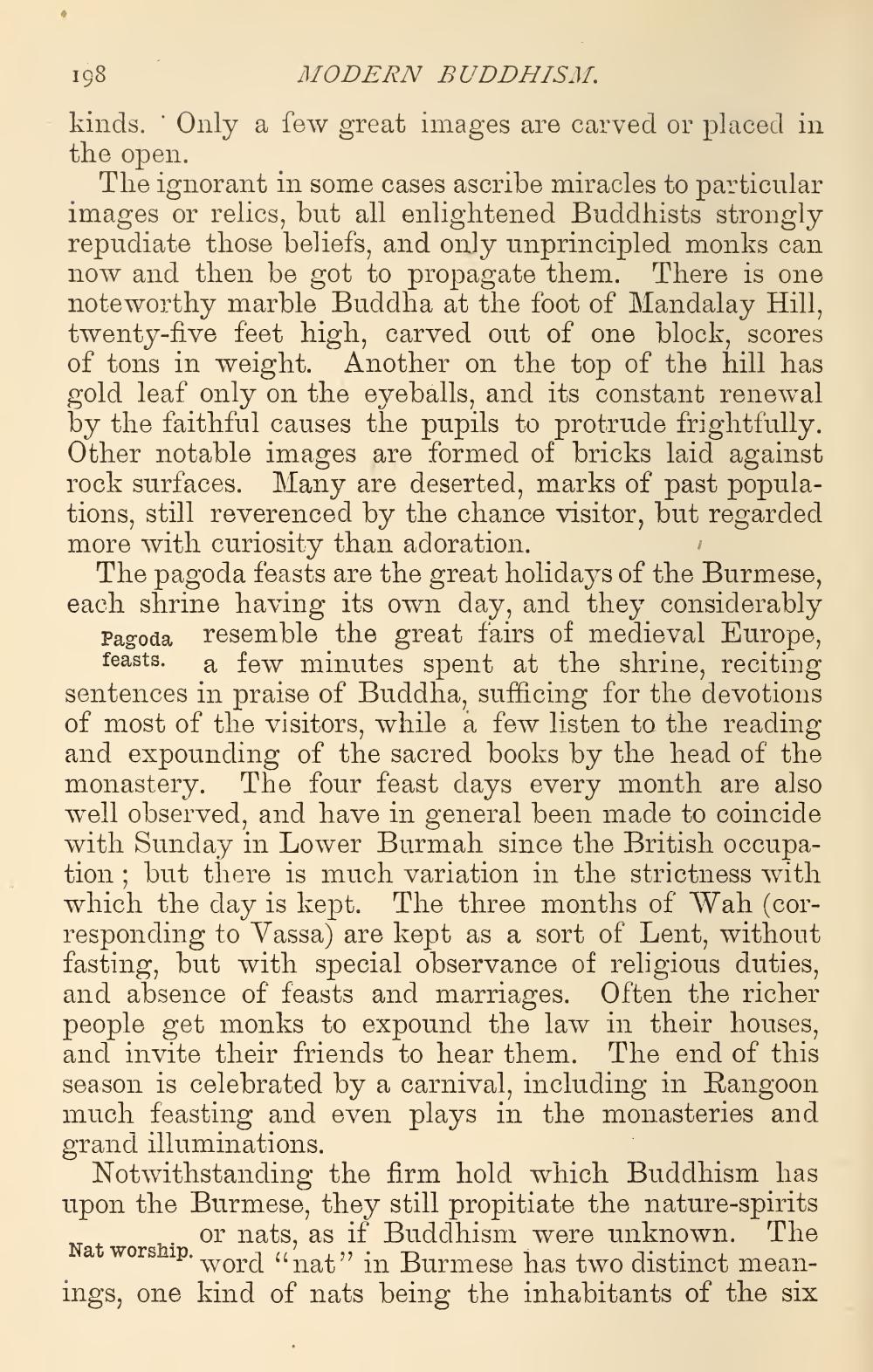________________
198
MODERN BUDDHISM.
kinds. Only a few great images are carved or placed in the open.
The ignorant in some cases ascribe miracles to particular images or relics, but all enlightened Buddhists strongly repudiate those beliefs, and only unprincipled monks can now and then be got to propagate them. There is one noteworthy marble Buddha at the foot of Mandalay Hill, twenty-five feet high, carved out of one block, scores of tons in weight. Another on the top of the hill has gold leaf only on the eyeballs, and its constant renewal by the faithful causes the pupils to protrude frightfully. Other notable images are formed of bricks laid against rock surfaces. Many are deserted, marks of past populations, still reverenced by the chance visitor, but regarded more with curiosity than adoration.
The pagoda feasts are the great holidays of the Burmese, each shrine having its own day, and they considerably Pagoda resemble the great fairs of medieval Europe, feasts. a few minutes spent at the shrine, reciting sentences in praise of Buddha, sufficing for the devotions of most of the visitors, while a few listen to the reading and expounding of the sacred books by the head of the monastery. The four feast days every month are also well observed, and have in general been made to coincide with Sunday in Lower Burmah since the British occupation; but there is much variation in the strictness with which the day is kept. The three months of Wah (corresponding to Vassa) are kept as a sort of Lent, without fasting, but with special observance of religious duties, and absence of feasts and marriages. Often the richer people get monks to expound the law in their houses, and invite their friends to hear them. The end of this season is celebrated by a carnival, including in Rangoon much feasting and even plays in the monasteries and grand illuminations.
Notwithstanding the firm hold which Buddhism has upon the Burmese, they still propitiate the nature-spirits or nats, as if Buddhism were unknown. The Nat worship. word "nat" in Burmese has two distinct meanings, one kind of nats being the inhabitants of the six




